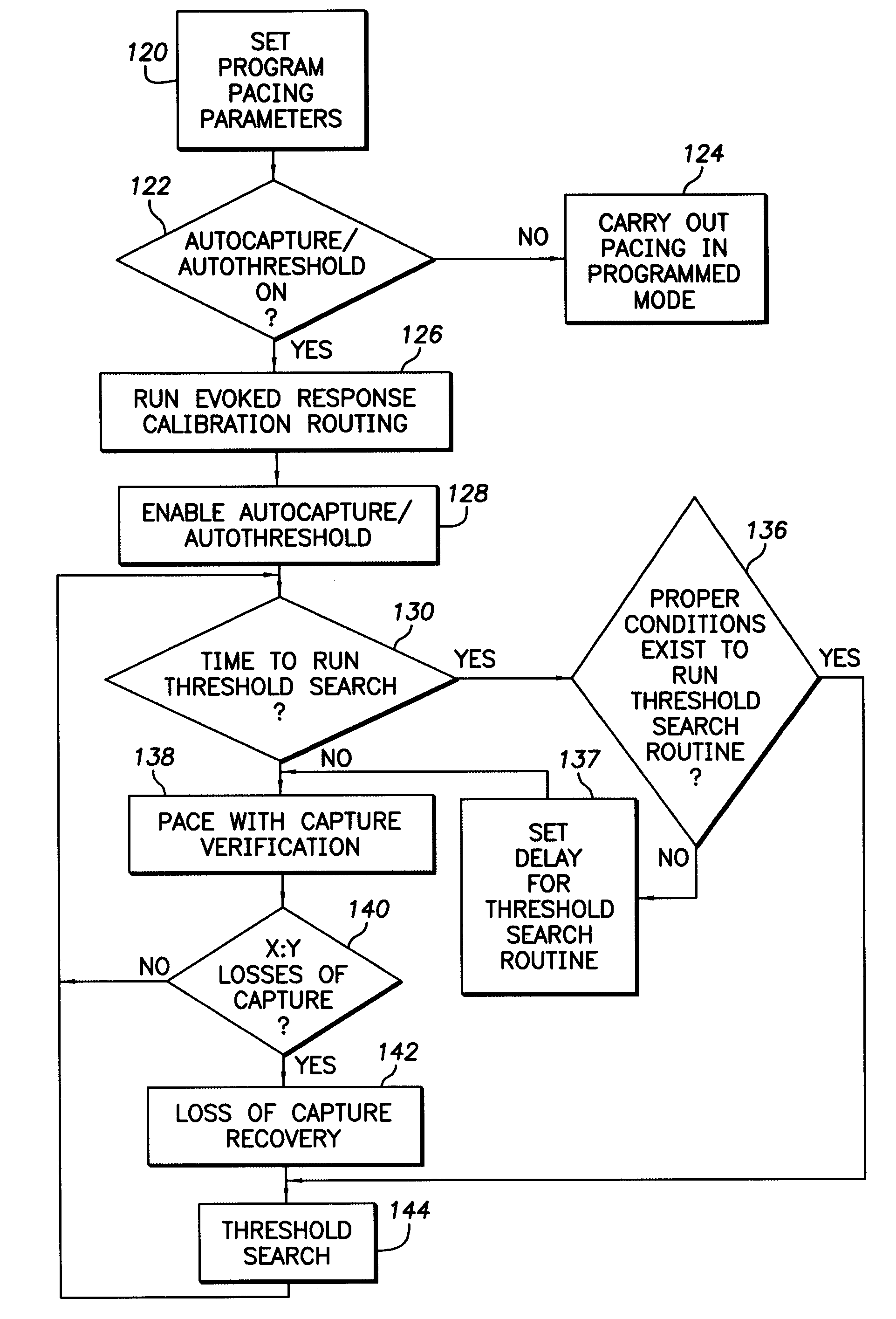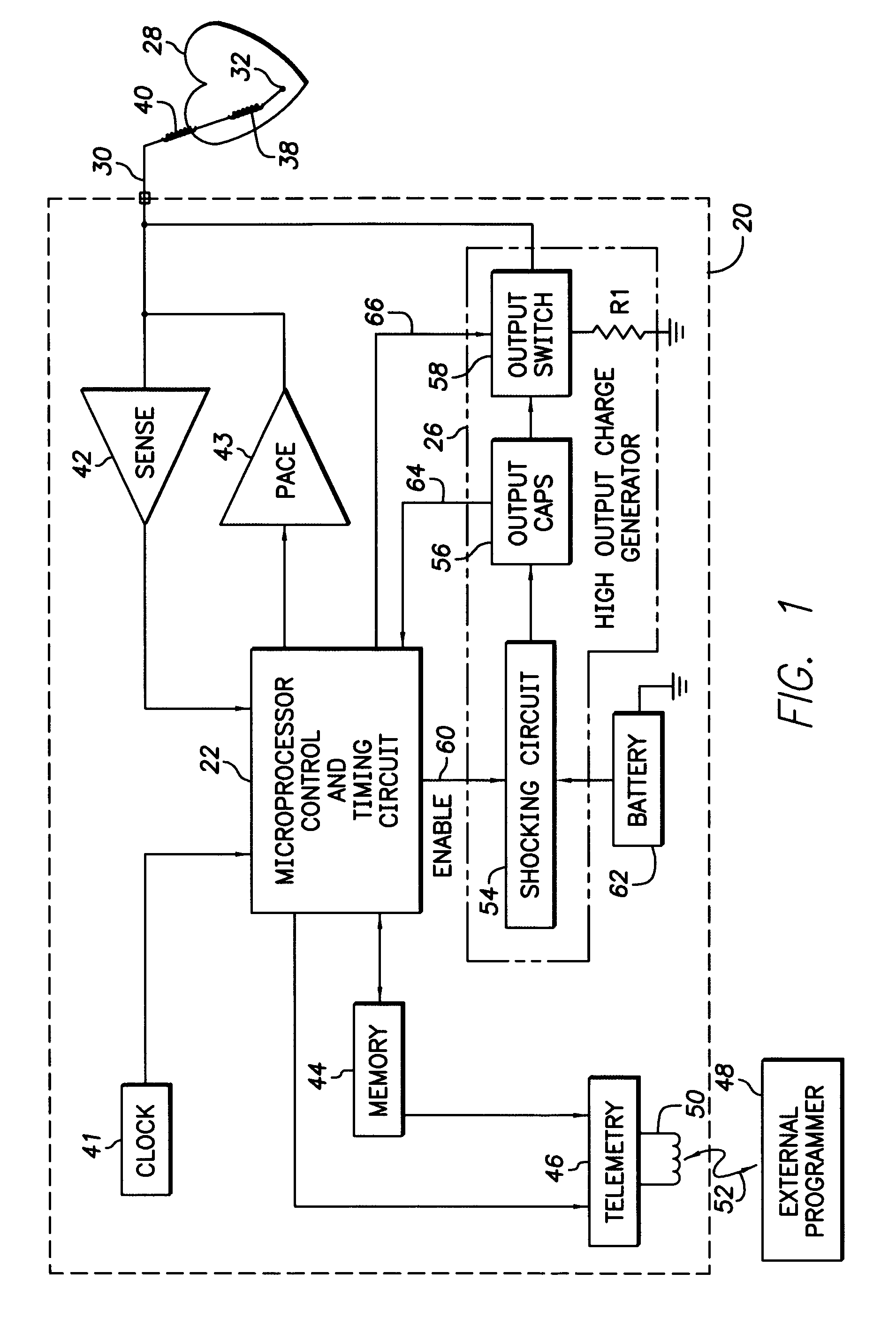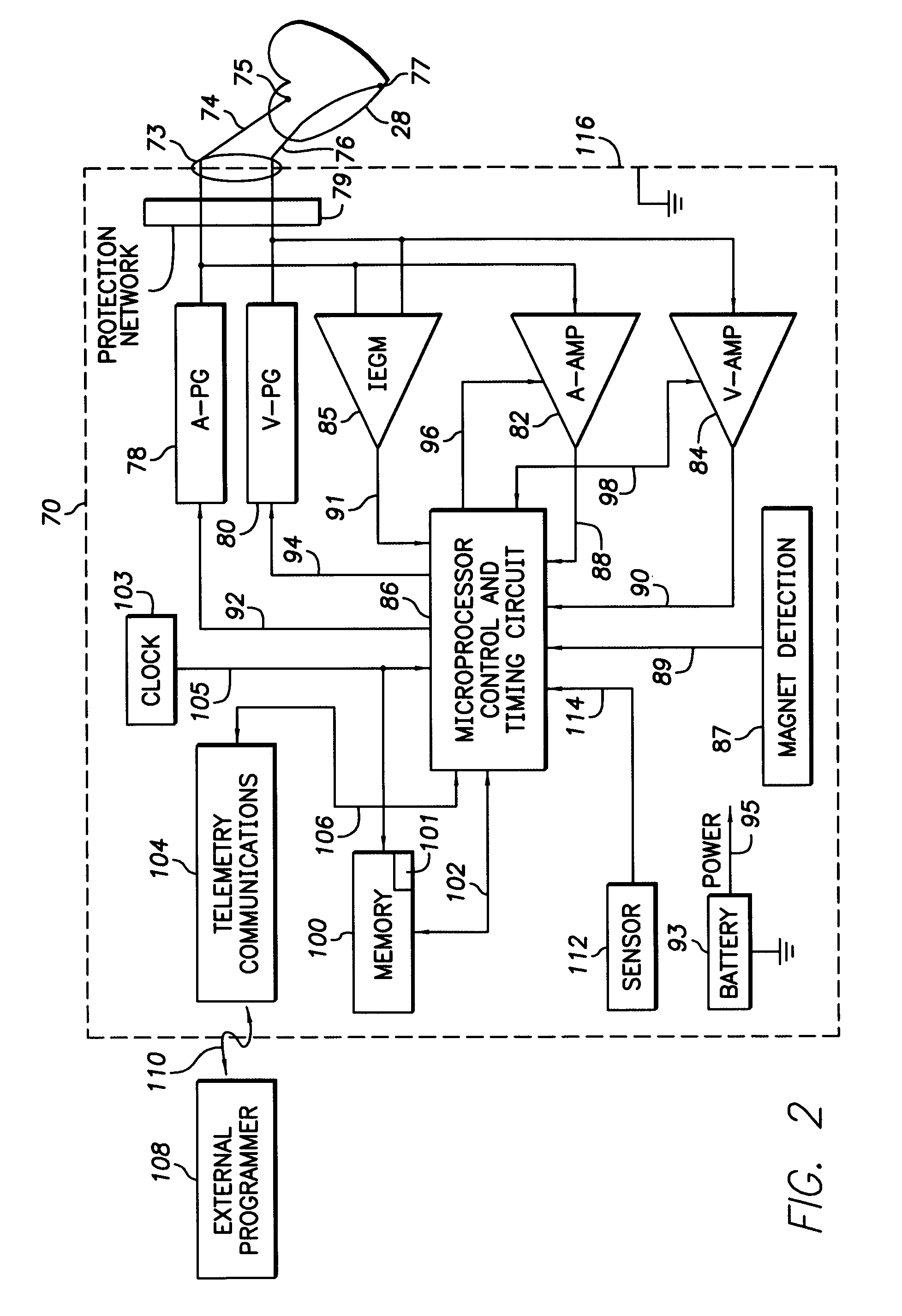Implantable cardiac stimulation device having autocapture/autothreshold capability
- Summary
- Abstract
- Description
- Claims
- Application Information
AI Technical Summary
Benefits of technology
Problems solved by technology
Method used
Image
Examples
case 1 (see the first portion of fig.8)
[0061]Case 1 (see the first portion of FIG. 8): The stimulation pulse amplitude is just below or just above the heart's stimulation threshold. Accordingly, changes in the patient's physiological condition, the presence of myopotentials, electrical noise or the like may cause alternating capture and loss-of-capture events, i.e., a CBCBCB . . . pattern, where C refers to capture associated with the primary pulse and B represents noncapture with delivery of a backup pulse. In the prior art, the pulse amplitude would not be increased since there are not two consecutive loss-of-capture events. However, in the present invention, an exemplary 2:3 criteria is satisfied after the fourth pulse of the sequence. Specifically, after 4 stimulation pulses, a pattern of CBCB has occurred which has 2 backup pulses (indicating a loss-of-capture) out of the last 3 pulses. Accordingly, the loss-of-capture recovery routine 142 will be executed. It is noteworthy that since only paced cycles are used in t...
case 2 (see fig.9)
[0062]Case 2 (see FIG. 9): The stimulation pulse is below threshold and the heart is experiencing PVCs from ectopic foci. As previously discussed, supernormal conduction may occur following each PVC due to an extended repolarization period or some other condition resulting in a transient decrease in the capture threshold. Accordingly, a below threshold stimulation pulse (i.e., a pulse that otherwise could not stimulate the heart) will now be able to stimulate the heart due to the PVC caused by an extension of the repolarization period or other reason. Accordingly, the below threshold stimulation pulse will now be able to generate an evoked response, i.e., the stimulation pulse will be captured. Following this captured pulse, the next below threshold pulse will again fail to capture and a backup pulse will be issued. Accordingly, a trigeminy pattern will occur as follows: BICBICBIC. Clearly, this sequence is contrary to the two consecutive loss-of-capture occurrence criteria of the p...
PUM
 Login to View More
Login to View More Abstract
Description
Claims
Application Information
 Login to View More
Login to View More - R&D
- Intellectual Property
- Life Sciences
- Materials
- Tech Scout
- Unparalleled Data Quality
- Higher Quality Content
- 60% Fewer Hallucinations
Browse by: Latest US Patents, China's latest patents, Technical Efficacy Thesaurus, Application Domain, Technology Topic, Popular Technical Reports.
© 2025 PatSnap. All rights reserved.Legal|Privacy policy|Modern Slavery Act Transparency Statement|Sitemap|About US| Contact US: help@patsnap.com



